At ContactMonkey, we’re big believers in using data to drive smarter business decisions. This guiding principle shapes how we support our partners in leveraging internal communication analytics for greater impact.
Understanding data and trends that affect communicators is also at the heart of our annual Global State of Internal Communications (GSIC) report.
For the past five years, we’ve been surveying leading communication professionals to better understand their role, absorb how strategies shift, and learn what is most important in the world of internal comms. This year, we’re happy to share that we had more respondents—and more intriguing data—than ever before, with participants from over 400 companies!
In this blog, we’ll share some of the most interesting discoveries from the 2024 report. Highlighted takeaway themes include the need for leadership comms during market upheaval, communications in hybrid environments, and the emerging role of AI.
Interested in a more detailed breakdown of 2024’s communication landscape? Download the full report for free.
Take a self-guided tour of ContactMonkey
See how our key features can streamline your internal communications.
Take product tour

Takeaway #1: Navigating Leadership Communication Amid Market Instability
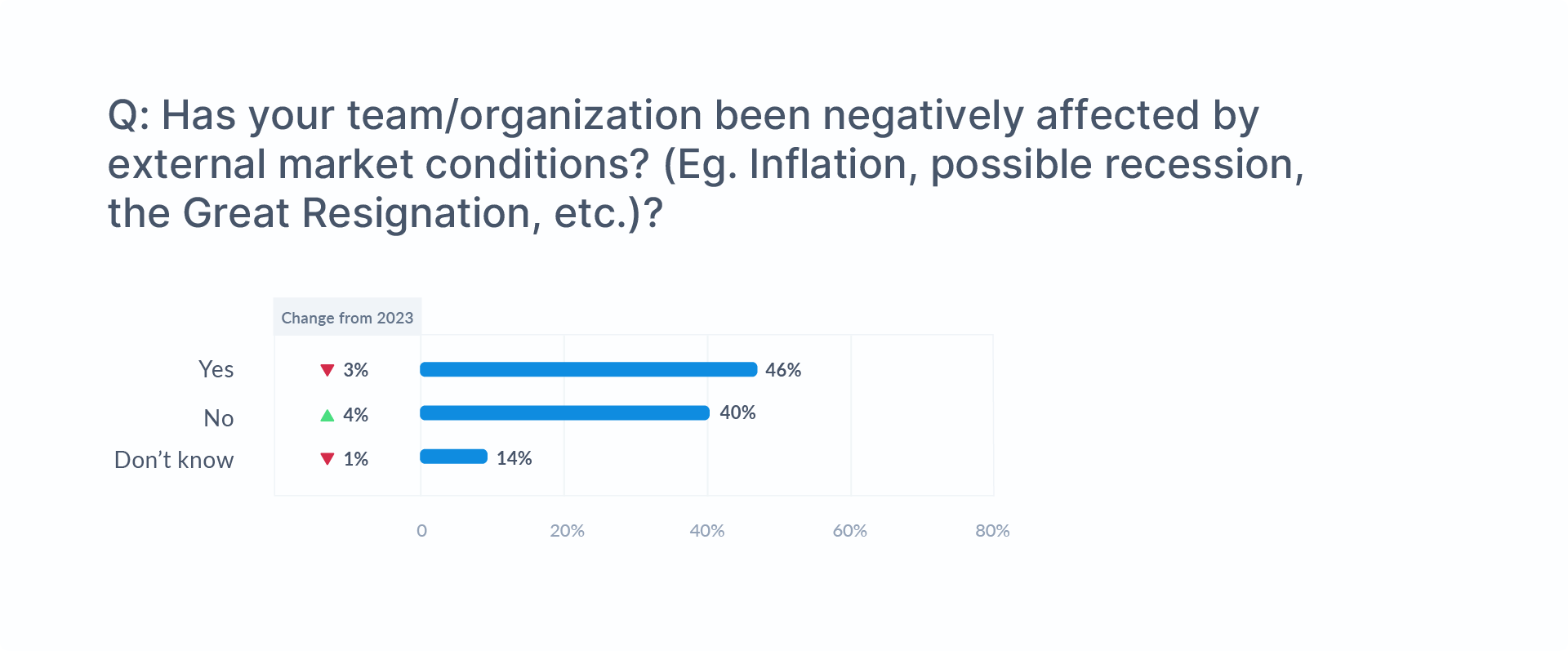
Despite a falling number of respondents reporting negative effects from inflation or fears of a recession, organizations seem to be letting anxiety about market forces drive their decision-making.
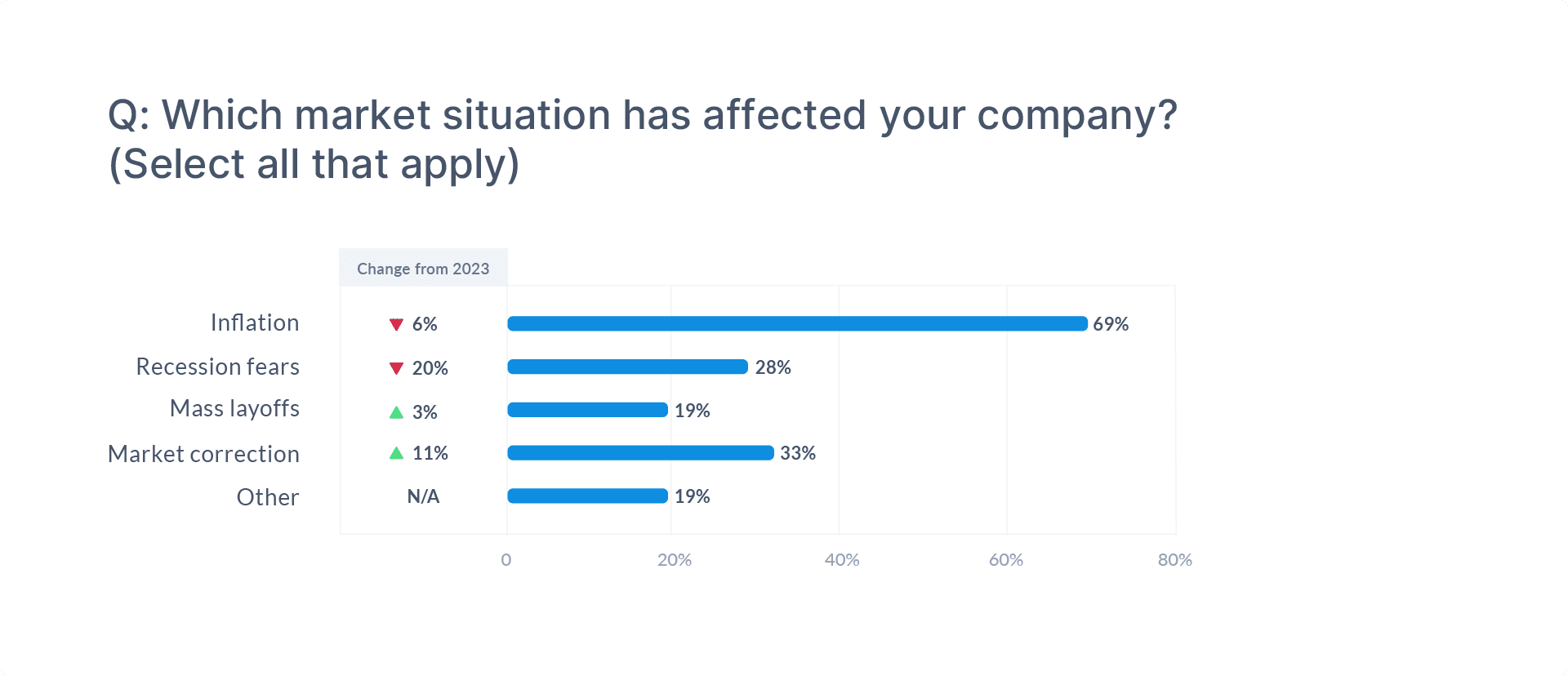
For example, 61% of respondents reported budget cuts or reduced tech spending at their organizations, up from 55% the year before. Also surging from 2023, downsizing was reported by 32% of respondents, while actual reports of turnover and attrition fell.
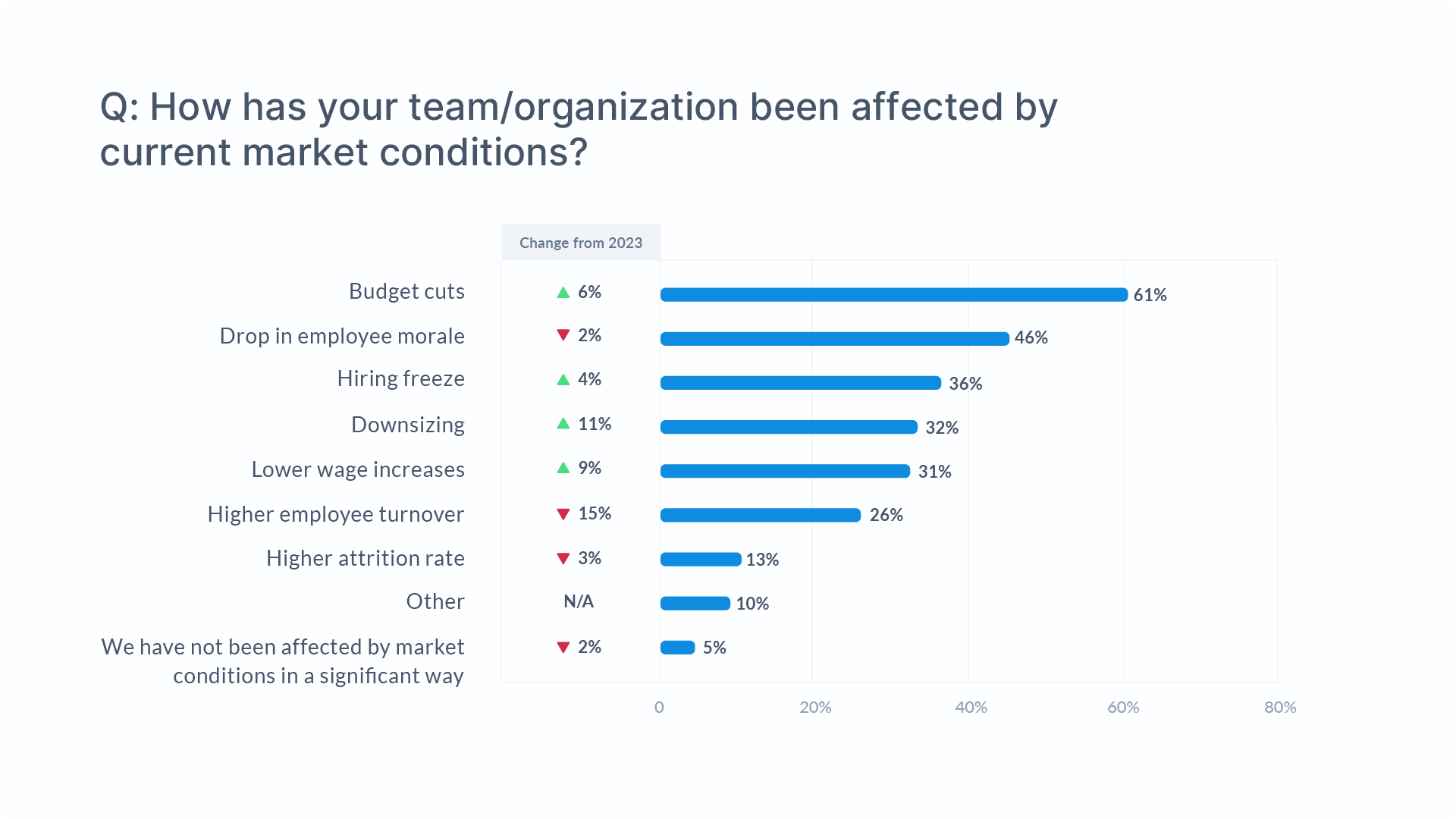
This volatile environment has reduced trust in leadership and increased anxiety about job security among employees. And tt the centre of managing this tumult: internal communicators.
Communicators have been tasked with fostering trust, maintaining morale, and keeping employees informed and engaged through organizational upheaval. Unsurprisingly, communicators have flagged improved leadership communication as key to their mandate.
Internal Comms Needs More from Leadership
Improved leadership communication was a critical focus for communicators in 2024, with 26% of respondents citing it as their highest priority for 2024 and 67% placing it within their top three goals.
And communicators themselves have felt the need for more transparency from leadership. Despite 80% of respondents reporting that their leadership recognized the value of internal communication, 53% reported having no defined internal communication plan. 49% were operating without a fixed internal communication budget.
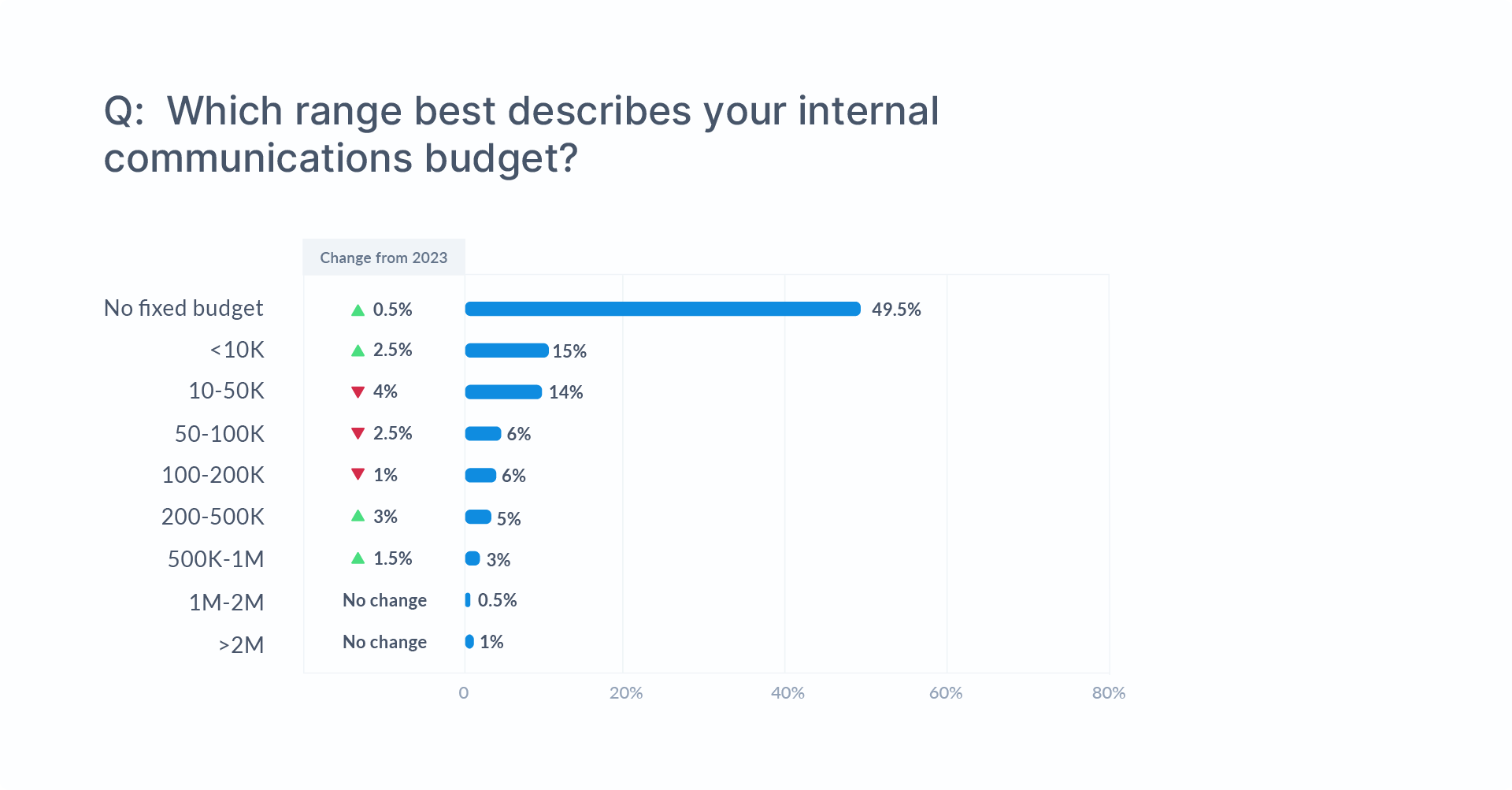
Without the resources to make long-term strategic goals, communicators cannot truly step into the role of strategic partners within their organizations. To help communicators meet the challenges that have been set for them effectively, leaders must show that their support for comms is more than just lip service.
To that end, communicators must continue to fight for adequate resources, and, most importantly, a commitment to transparency from leadership. With support, communicators can be architects of trust within their organizations, steering leaders and employees toward greater stability and success.
Interested in a complete view of what internal comms professionals have to say about market forces? Download the full 2024 Global State of Internal Communication Report for free.
Download ReportWatch ContactMonkey LIVE in action
Join live demo

Takeaway #2: Building Stronger Communications in a Hybrid Work Environment
With communicators often bearing the brunt of engaging employees working outside of the office, how to best reach remote and hybrid employees remains a hot topic this year.
And like hybrid work itself, interest in remote and hybrid work is not going anywhere. This year, 32% of respondents indicated remote and hybrid work structures as a key topic of interest.
But when it comes to work structure and internal comms, what are internal communicators reporting?
More and More Workplaces Are Going Hybrid
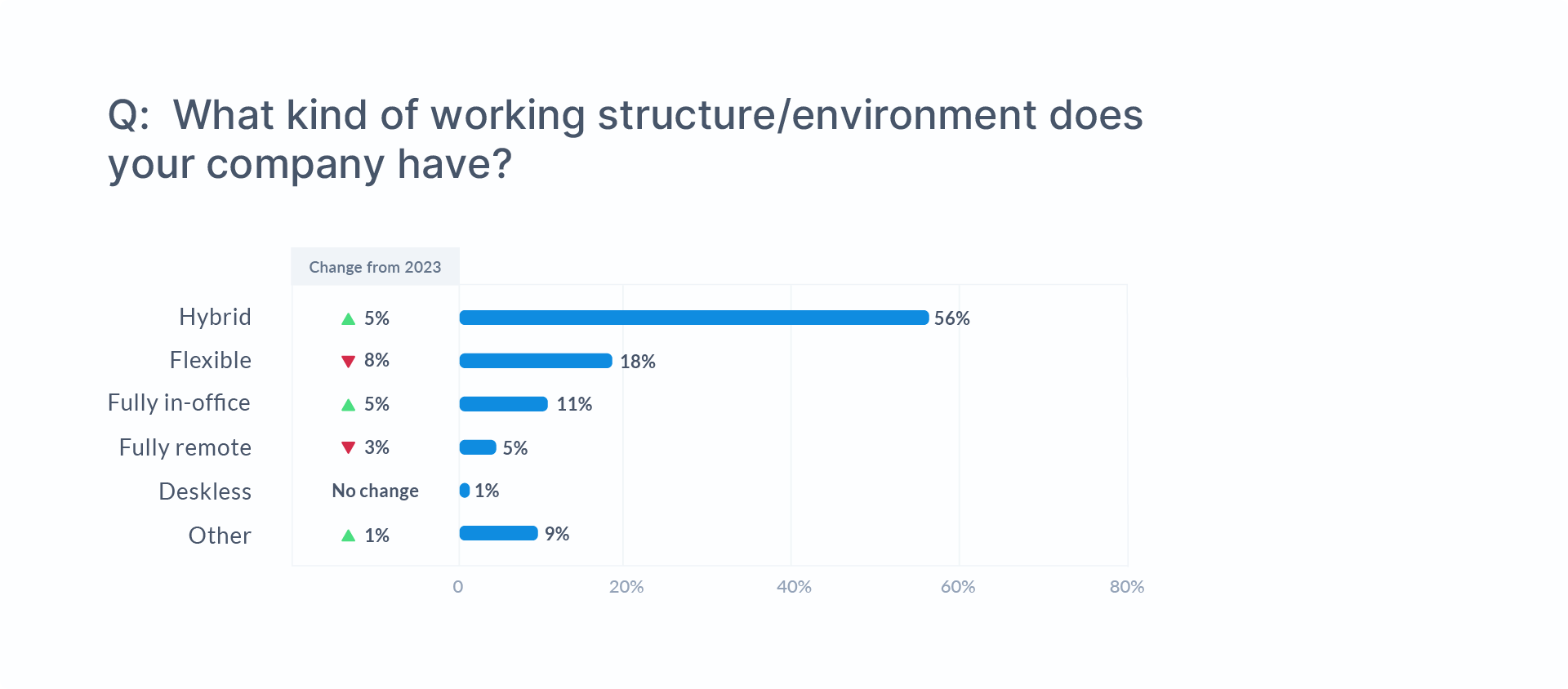
Continuing as a clear 2023 trend, organizations are pushing harder to increase employee office time.
Hybrid work structures, with a predetermined split between remote and in-office time, not only continued to be the norm this year but rose to 56% from 51% the year before. The number of respondents reporting their organizations being fully in-office also grew, shooting up to 11% from only 6% the year before.
This growth was at the expense of fully remote and flexible positions where employees choose their work structure.
So while the future of fully in-office work is uncertain, for most employees, the hybrid model is here to stay. And with it comes a whole host of challenges for communicators.
Hybrid Work Requires Thoughtful Communication
According to Buffer’s State of Remote Work report for 2023, 15% of remote workers find internal communications to be an active struggle. On the communicator side, 33% of GSIC survey respondents stated that engaging remote and hybrid workers was their main challenge this year.
And of course, with the rise in set office days comes a corresponding loss in flexibility for employees. In the face of this, communicators are not only dealing with the challenges of remote communication but also with employees who may resent more in-office time.
By and large, communicators are up for the task of engaging dispersed employees. In fact, 68% of respondents rated their internal comms’ ability to reach a dispersed workforce as good, very good, or excellent. This suggests communicators have solidified the hybrid workplace strategies they’ve built over the past few years to meet the communication needs of remote and hybrid teams.
Want to know how communicators are staying on top of communications for their hybrid workforces? Download the full 2024 Global State of Internal Communication Report for free.
Download ReportWatch ContactMonkey LIVE in action
Join live demo

Takeaway #3: Evaluating Artificial Intelligence in Internal Communications
For those with their fingers on the pulse of internal comms, AI has been an inescapable subject of late.
There have been articles, think pieces, and panels at every internal communication conference dedicated to AI. So, it’s not surprising that 42% of respondents to the GSIC survey said that artificial intelligence was a key topic of interest for them in 2024.
AI integration in internal communication, however, is still uneven.
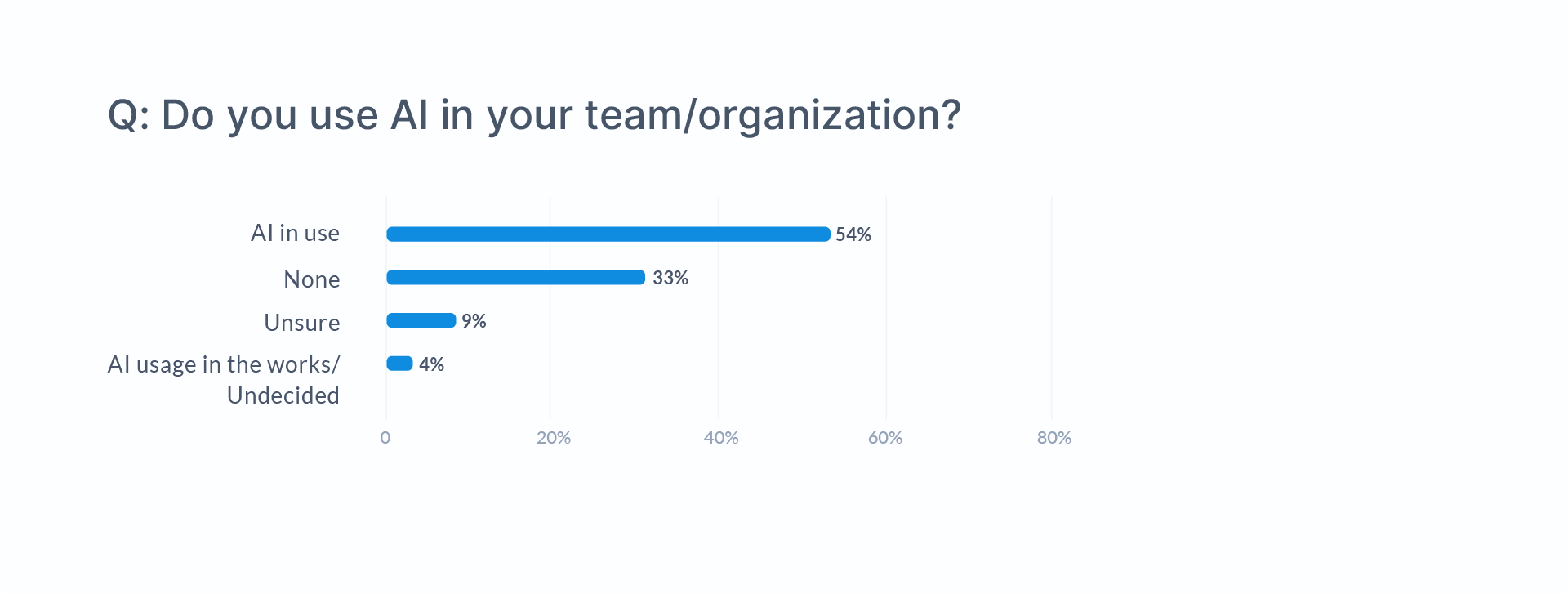
This year, 54% of respondents indicated some level of AI usage on their teams, with an additional 4% citing that their organization is still undecided about AI. On the flip side, 33% of respondents said their organizations do not use AI, and for a small but noteworthy 2%, AI is either completely banned or severely restricted.
Interestingly, the remaining 9% of respondents weren’t sure whether or not AI is being used within their organizations. This could mean any number of things but underscores a lack of transparency regarding AI policy in these organizations.
AI Adoption Requires Careful Planning
As AI becomes more prevalent, organizations need to be proactive in talking openly with employees about if, how, and when it should be used. This means being clear about the rules—whether AI is allowed and what restrictions there are, if any. Plus, if AI tools are available, employers should teach about the AI tools they have access to and the best practices for their use.
With or without this guidance, many employees will start using AI tools on their own. By providing AI policies upfront, companies can ensure that employees are aware of the limitations and risks of AI and use it in a way that benefits everyone.
Of course, it’s worth noting that despite its growing ubiquity, communicator access to AI doesn’t necessarily mean it will ever be central to or prominent within their job functions. In fact, while more than half of communicators indicated that AI was leveraged within their teams, only 26% considered AI content creation tools to have the highest value-add for their internal communication.
Want to know how AI is changing the face of internal communication? Download the full 2024 Global State of Internal Communication Report for free.
Download ReportLearn More About the Changing Landscape of Internal Communications with Our Free Report
With employees facing continuous changes and volatility within their organizations in 2024, communicators have clearly got their work cut out for them. Despite these challenges, however, this year’s Global State of Internal Communications Report has shown the resilience and adaptability of communication professionals.
As we move into the future, communicators will play a vital role in fostering trust, transparency, and engagement in their organizations. Hopefully, these challenges will provide opportunities for growth and innovation, allowing communicators to continue driving positive organizational changes.
Ready to read the full 47-page deep-dive report? Get your copy of the 2024 Global State of Internal Communications Report by ContactMonkey.



